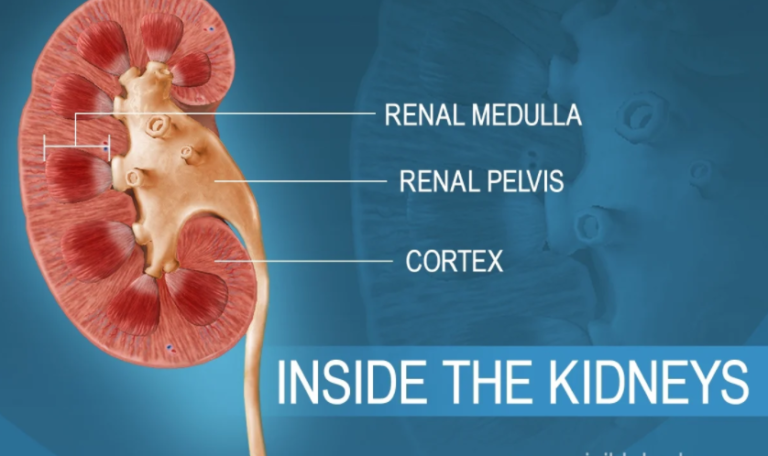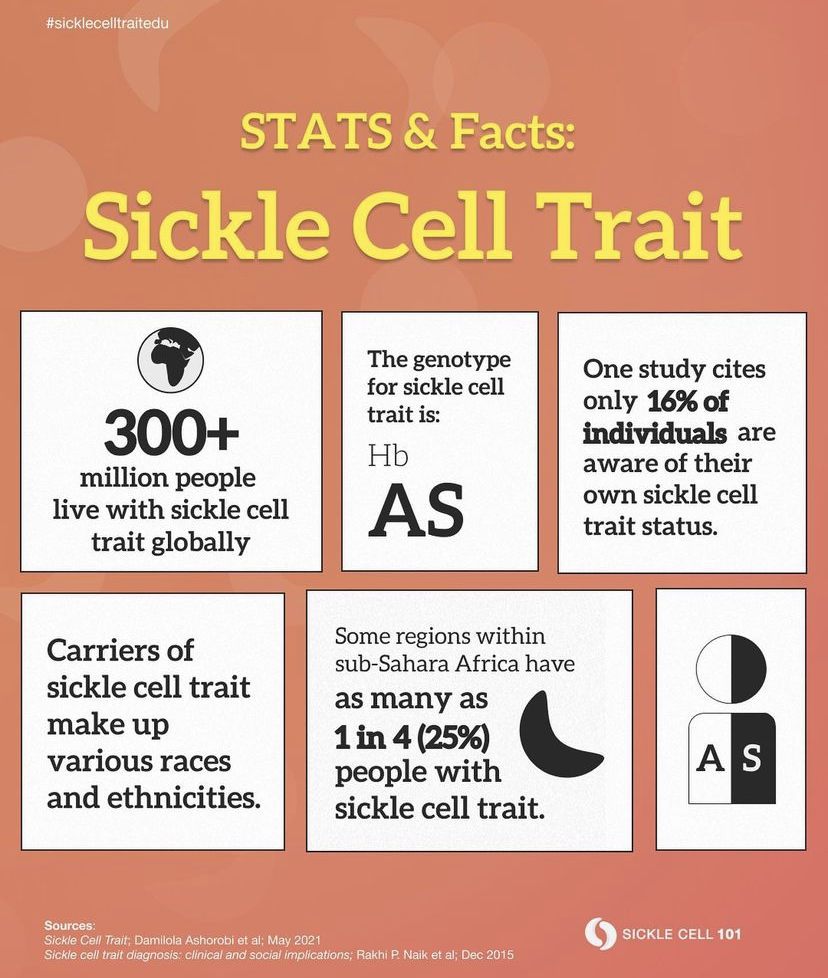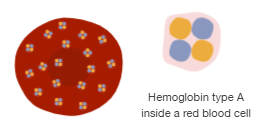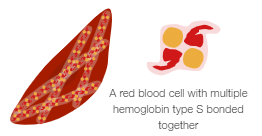There are some complications that a person with sickle cell trait can experience. Each person with sickle cell trait has a different experience from another person. Many may never experience any of these, while some may. Nonetheless, knowing these helps to stay informed.
Exertional complications
Exertional stress, rhabdomyolysis, and metabolic acidosis
In sickle cell trait, exertional stress, like physical training beyond the limits that a person can tolerate, often leads to sickling and can create a number of harmful effects. Sickling in sickle cell trait can be the same as seen in sickle cell disease—sickling can block blood vessels in lungs, the heart, the brain, muscles, and other tissues and organs. Exertional stress can result from extreme physical exertion/intense exercise, activity duration and recovery, dehydration, and climate effects (usually heat but can also occur during very cold temperatures).
During intense activity, muscle tissue can break down, which is called rhabdomyolysis, and can release a protein called myoglobin and other cell substances into the blood. Eventually, these make their way to the kidneys and can harm the kidneys.
Most substances inside cells are harmful when dumped into the bloodstream, which is why our bodies create strong cell membranes to prevent this from happening. So, when red blood cells break down or muscle tissues break down and release their contents, it can make the bloodstream acidic. In addition, during extreme physical exertion, electrolyte levels can become unbalanced. When all of these occur, this is called metabolic acidosis and can lead to organ damage or failure.
Exercise-related sudden death
If sickling, tissue damage, muscle breakdown, and organ damage continue as a person with sickle cell trait keeps exerting themselves and not stopping, eventually this may lead to exercise-related sudden death. Even though those, particularly athletes, with sickle cell trait potentially are at a greater risk for sudden death compared to those without sickle cell trait, it is still rare and does not occur as often as may be portrayed. Proper exercise protocols, warm up activities, and proper hydration can help decrease such risk. Nonetheless, because it can occur, it is still important to note so that those with sickle cell trait take the necessary precautions.
Splenic Infarction
Splenic infarction can occur in sickle cell trait when sickling occurs, although it is a rare complication. Research has found that splenic infarction in sickle cell trait is most likely due to dehydration in athletes and in those with sickle cell trait who are at high altitudes of about 5,000 to 7,500 feet above sea level. To give context, sea levels of some major cities are listed below.
- New York City, NY USA: 33 ft above sea level
- Dubai, UAE: 52 ft
- Lagos, Nigeria: 135 ft
- Athens, Greece: 137 ft
- Toronto, Canada: 251 ft
- Montego Bay, Jamaica: 1,000 ft
- Denver, Colorado, USA: 5,000 ft
- Grand Canyon, Arizona, USA: 6,600 ft
Kidney complications
Chronic Kidney Disease (CKD)
Older adults with sickle cell trait have an increased risk for chronic kidney disease, particularly in African American and Caribbean populations due in part to comorbidities, like hypertension and Type II Diabetes. CKD affects approximately 15% to 35% of adults over the age of 45 years. In the kidneys, the renal medulla can have low levels of oxygen for a variety of reasons that are specific to each person. Reduced oxygen levels in the renal medulla can lead to sickling and can damage parts of the kidneys.
Interestingly, some reports have shown that, if a person with sickle cell trait also inherits the gene for α-thalassemia, they will make less hemoglobin type S, so they will experience less sickling in the kidneys. So, α-thalassemia can offer protective effects in sickle cell trait just as in sickle cell disease.
Renal Medullary Carcinoma (RMC)
Renal medullary carcinoma is an extremely rare, yet aggressive cancer. It tends to be diagnosed when it has already metastasized or moved to other regions of the body. Once RMC reaches metastasis, mortality risks are significantly higher, so it’s important that those with sickle cell trait collaborate with their doctors to ensure proper kidney health and the absence of this cancer, even if it is rare.

While researchers are still trying to understand the full cause(s) of RMC, they are finding that the continuous sickling in the renal medulla plays a role. Other things may contribute as well like whether certain genes that prevent cancer are turned “on” or “off”.
RMC tends to occur most often in children and young adults less than 21 years of age. Early signs of hematuria (blood in urine) and pain on one side of the body between the abdomen and back may indicate that a doctor should conduct a full workup to evaluate for a potential kidney complication, like RMC. Hematuria alone, which is common in adults with sickle cell trait, may not always mean RMC is present; however, if a child or young adult who is known to have sickle cell trait suddenly starts showing signs of hematuria, let their physician know to immediately begin testing for overall kidney health.

 Our red blood cells appear sickled because hemoglobin HbS changes shape. There are many hemoglobin proteins inside each red blood cell. Usually, they like to “roam around” the red blood cell having their own space to do so. However, when each sickle hemoglobin (HbS) drops off oxygen to a cell or a tissue, the hemoglobin will change its shape, making other nearby hemoglobin S start to stick together so that they create long lines within the red blood cell. This is what causes red blood cells to become crescent shaped.
Our red blood cells appear sickled because hemoglobin HbS changes shape. There are many hemoglobin proteins inside each red blood cell. Usually, they like to “roam around” the red blood cell having their own space to do so. However, when each sickle hemoglobin (HbS) drops off oxygen to a cell or a tissue, the hemoglobin will change its shape, making other nearby hemoglobin S start to stick together so that they create long lines within the red blood cell. This is what causes red blood cells to become crescent shaped. We receive two copies of a gene—one from each parent, and we call this our genotype. In sickle cell trait, one copy of hemoglobin has the instructions for a normal hemoglobin (HbA) and the second copy has the instructions for a sickled hemoglobin (HbS). So, the body will create both hemoglobin types, where in sickle cell trait, HbS is in much smaller amounts (anywhere between 25% to 50%) than the amount seen in sickle cell disease. Each type, HbA and HbS, will live in each red blood cell.
We receive two copies of a gene—one from each parent, and we call this our genotype. In sickle cell trait, one copy of hemoglobin has the instructions for a normal hemoglobin (HbA) and the second copy has the instructions for a sickled hemoglobin (HbS). So, the body will create both hemoglobin types, where in sickle cell trait, HbS is in much smaller amounts (anywhere between 25% to 50%) than the amount seen in sickle cell disease. Each type, HbA and HbS, will live in each red blood cell.